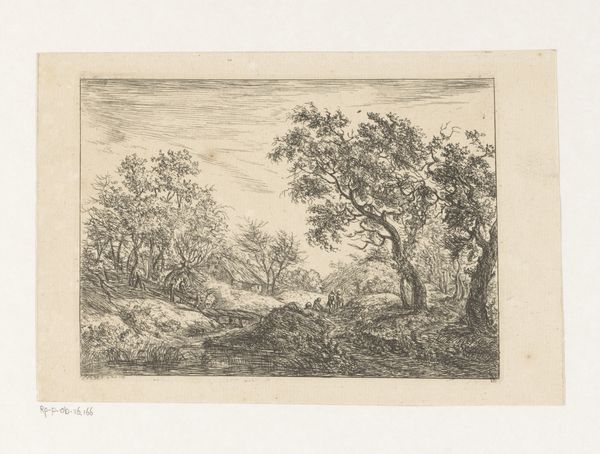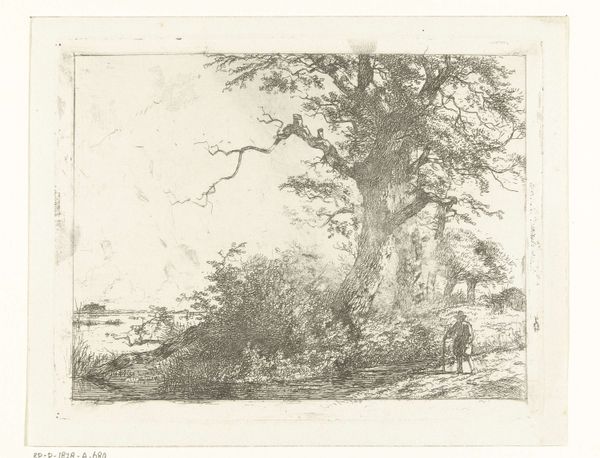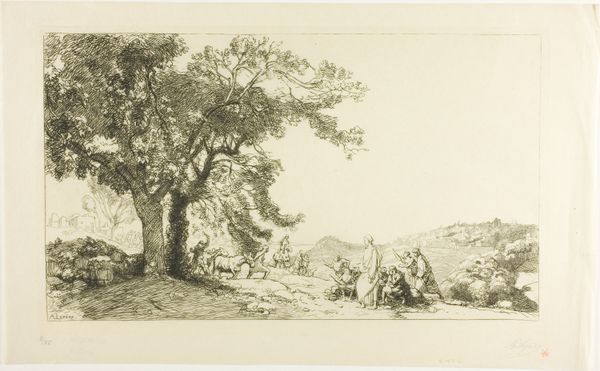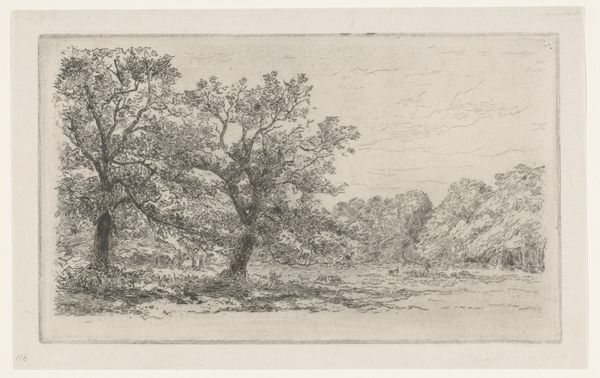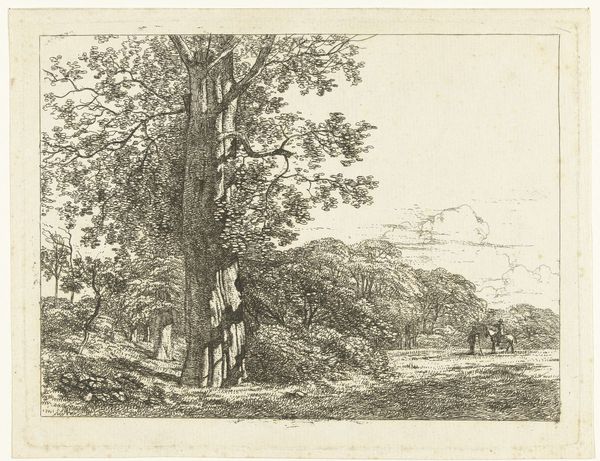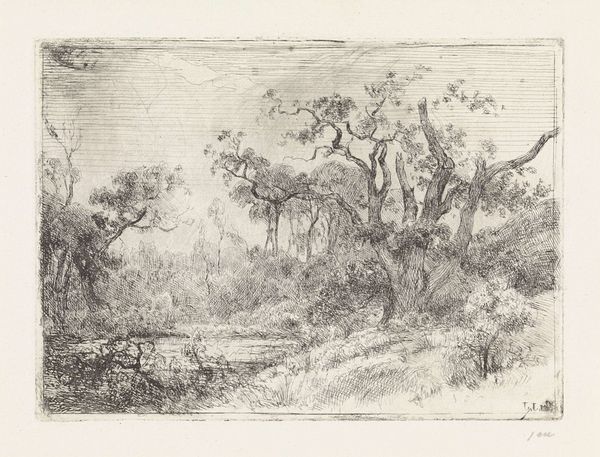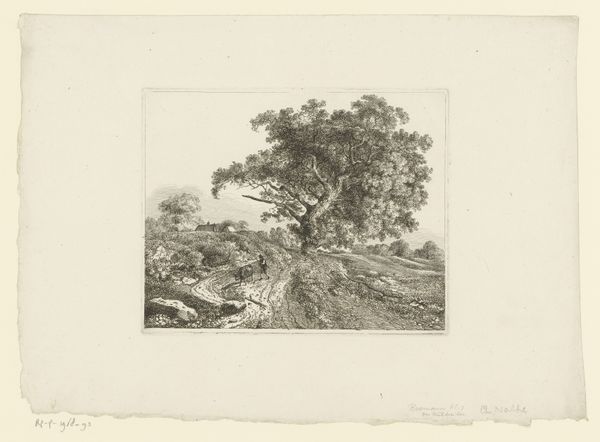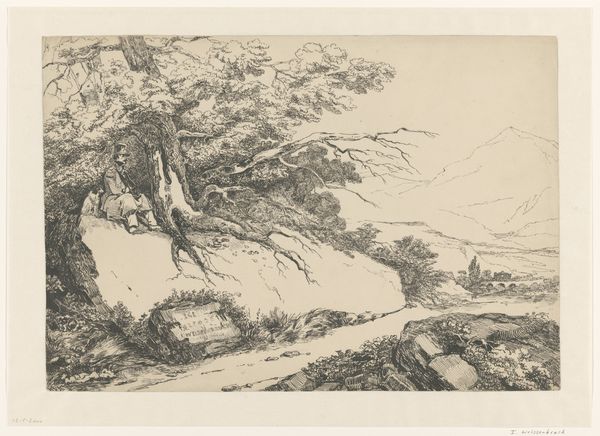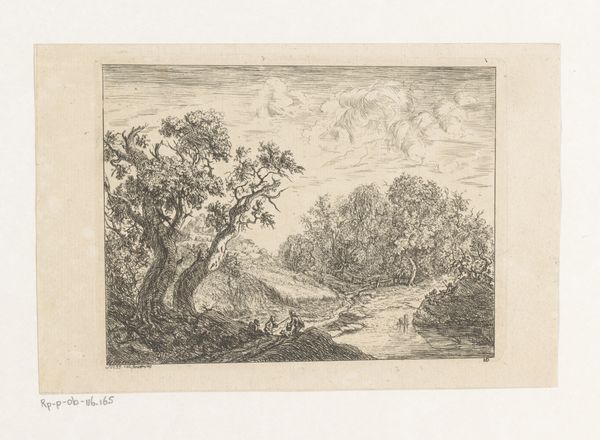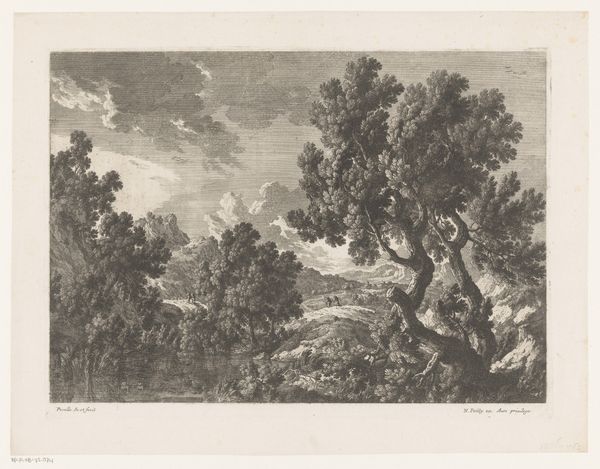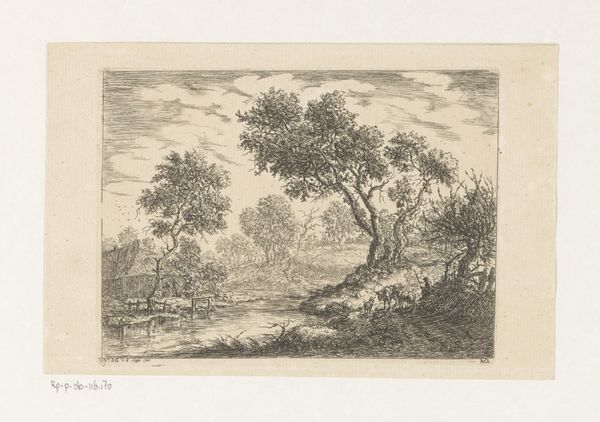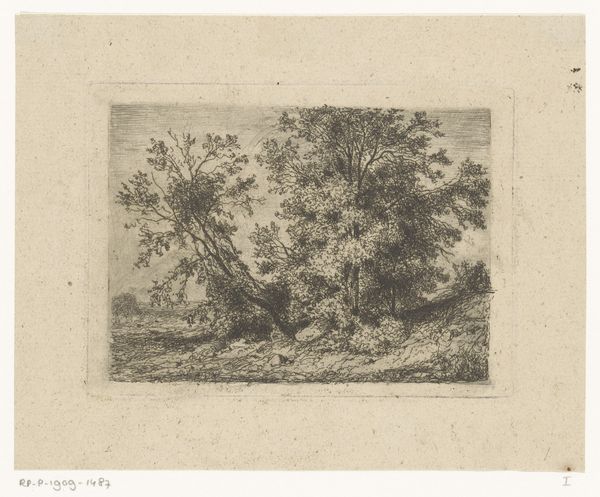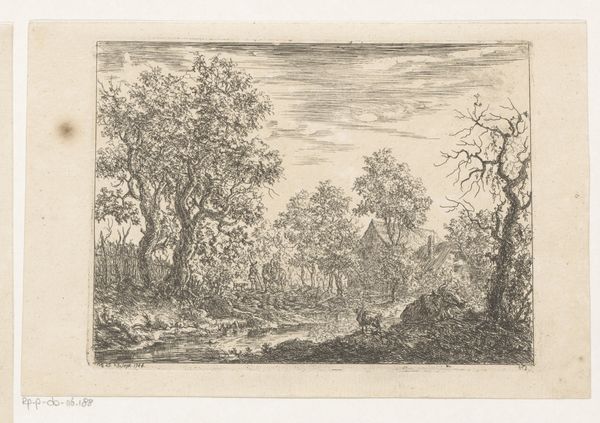
drawing, etching
#
drawing
#
etching
#
landscape
#
etching
#
romanticism
Dimensions: height 88 mm, width 161 mm
Copyright: Rijks Museum: Open Domain
Editor: Here we have Albertus Brondgeest’s "Landscape with Man and Child," dating sometime between 1796 and 1849. It’s an etching, which gives it a kind of delicate, almost ephemeral quality. The scene itself is very tranquil, but the etching technique seems almost industrial compared to the pastoral scene. How do you interpret this contrast? Curator: It’s interesting you focus on the materials, as Brondgeest's choice of etching actually brings forth the socio-economic realities underlying even the most serene landscape. Consider the labour involved: the engraver, the printer, the paper-maker. Each craft leaves its trace, materially embedded in the final artwork. The landscape tradition romanticizes nature, yet its production is reliant on very earthly processes and markets. Does that influence your reading? Editor: It definitely does. Knowing that so much labour went into this changes the way I see the man and child in the image. They almost become symbols of that labour somehow, part of the larger economic process that created this image. Were these prints widely distributed? Curator: Likely yes. Etchings like this allowed for reproduction and dissemination to a wider audience than unique paintings. The consumption of these images played a part in shaping perceptions of landscape and national identity. Notice how the material limitations and the inherent repeatability of the etching shapes the "aura" of this work, relative to painting. Editor: So, it's not just a pretty picture, it's also a commodity. That tension between art and commodity makes it much more compelling. Thanks! Curator: Indeed. Considering the physical creation and the conditions of its circulation reveals the social life embedded within art. Seeing the means of production reframes the reception.
Comments
No comments
Be the first to comment and join the conversation on the ultimate creative platform.
